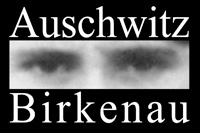




Museum or Memorial Site?
Establishment of the Auschwitz-Birkenau State Museum
The Nazi German Auschwitz concentration camp was liberated by Red Army soldiers on 27 January 1945.
Just a few months after the end of the war a group of Polish survivors started publicly propagating the concept of commemorating the victims of Auschwitz. As soon as it was possible, some of them came to the former camp to protect its buildings and ruins. Their efforts resulted in setting up the so-called Permanent Former Auschwitz Camp Security and took care of thousands of people who started arriving in large numbers to search for traces of their relatives and to pay tribute to the victims.
Even before the Museum was officially established, former prisoners prepared the first exhibition on the camp site, opened on 14 June 1947. The opening ceremony was attended by approximately 50 thousand people, including survivors, relatives of the murdered, people from all over Poland and delegated Polish state authorities, as well as representatives from the Central Commission for Investigation of German Crimes, the Central Jewish History Commission, and delegates of the British, Czechoslovakian and French embassies.
In July 1947 the Polish Parliament called into being the Auschwitz-Birkenau State Museum.
Museum or Memorial Site?
The first task of the museum was to safeguard the former camp, its building and environs, to gather evidence and materials concerning German atrocities committed at Auschwitz, to subject them to scientific scrutiny and to make them publicly available. Despite this, there is still debate amongst former prisoners, museum experts, conservationists, historians, teachers and the mass media on how to organize, manage and develop the Museum.
As early as 1947 the management of the Museum initiated a press discussion by inviting journalists, former prisoners, and visitors to present their opinions about the institution. The functions of the new Museum and the message it should convey dominated the discussion. There were suggestions that it should be both a Museum and a place for the commemoration of the victims simultaneously.
Not everyone accepts the name “museum”. Some believe that the former camp is, in the first instance, a cemetery; others that it is a place of memory, a monument; others still regard it as a memorial institute, a research and education center with respect to those who were killed. The site – formally referred to as a museum – in fact fulfills all of these functions, as they do not cancel out, but rather complement one another.
The status of a Museum also allows for using a wide range of legal grounds and so-called good practice in the protection of collections and archives, among other things in the loan procedures all over the world.
The everyday work of conservationists, educators, museum specialists, archivists and many other people helps preserve the memory at the authentic site of an unbelievable crime.
